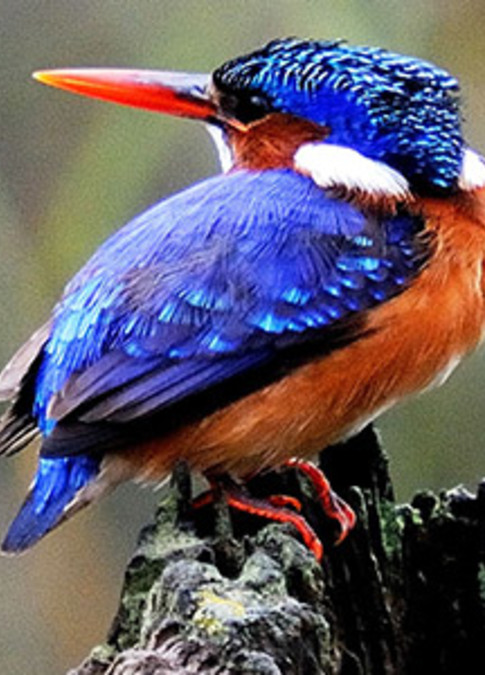Brand Images
The term “brand image” is a comparatively recent concept, although the idea of linking a product to animals for example, is as old as the hills. I have noticed of late advertisements for cement associated with elephants, car tyres with lynx and beauty products with doves; the latter being singularly incongruous in my opinion, as doves are among the messiest of birds. Years ago while on a visit to Europe I noticed an oil company’s signs enjoining one to “Put a tiger in your tank”, which caused a friend of mine to wonder what effect a tiger would have in the tank of his Jaguar.
These idle thoughts were passing through my mind while sitting on the deck at the restaurant at the main camp overlooking the plains below. Earlier I had spent some minutes with the telescope observing a group of zebra, and had been reminded that I always connect tyres not with lynx, but with these perennially well-fed creatures in their striped pyjamas, not that to my knowledge any tyre company has ever made use of zebras to sell their products. The association goes back more than fifty years to my school days and an Afrikaans set-book by “Sangiro” - Andries Albertus Pienaar – in which he described his adventures while filming wild-life in East Africa during the 1920s.
Barely a decade earlier, in 1913, an American hunter, Stewart Edward White, heading a typical foot safari composed of bearers and white hunters, became one of the first westerners to penetrate the Serengeti - “where the land goes on forever” – the traditional home of the Masai. Here he saw the incredible herds of antelope and their attendant predators, and his descriptions of what he had witnessed sparked a new form of tourism. It also coincided with developments in cinematography that enabled adventurous souls to record for the stay-at-homes the wonders of African wildlife. Nearly a century later both the game-viewing safari, and wildlife films or videos have not lost their appeal.
Among the first to make use of a motor vehicle to film wildlife in East Africa was the American couple Martin and Osa Johnson. Shots from their films still crop up occasionally on television. Although less well-known, the South African, AA Pienaar, who later became a custodian of wildlife in South West Africa (now Namibia) and who wrote books under the nom de plume Sangiro, was equally enterprising. In those distant days there were few roads, no roadside assistance and no four-wheel drive vehicles. One was on one’s own and a sound knowledge of the workings of one’s car was as essential as off-road driving skills. Pienaar was fortunate enough to obtain the services of a local man who proved to be not only an accomplished driver, but a mechanical wizard, and who played a major role in the success of the expedition. Because of his small stature he was given in those less sensitive days the now politically incorrect nickname of “Boesman” - Bushman. Whatever he lacked in height he more than made up for with his technical ability, boundless energy and physical dexterity.
The Pienaar expedition very sensibly chose to use a model T Ford, a relatively tough and simple vehicle capable of coping with the rugged back roads of North America. It had also proved itself in South Africa, but the almost complete lack of roads in East Africa resulted in constant breakdowns of one kind another, yet every time the expedition ground to a halt Boesman was able to make repairs and to get the Ford moving again. Understandably Pienaar in his book sang the praises of both his driver/mechanic, and of the Ford. It seemed that the combination of Boesman and the Model T were unstoppable. Those of us who at the beginning of the book favoured Chevrolets or other makes were by its end all Ford fanatics. But towards the end of the expedition there occurred a breakdown that taxed even Boesman’s ingenuity. After a series of punctures it became apparent that the tyres were beyond repair. There was no possible source of replacements and it seemed that the expedition had come to a final halt. While the others went off in search of game, Boesman was left with the Ford. On their return it was to find that once again the wizard had worked his magic. With zebra hide bound to the wheels with fencing wire, and dry grass taking the place of the inner tubes, the Ford was ready to go again.
Is it any wonder that zebras put me in mind of tyres?










